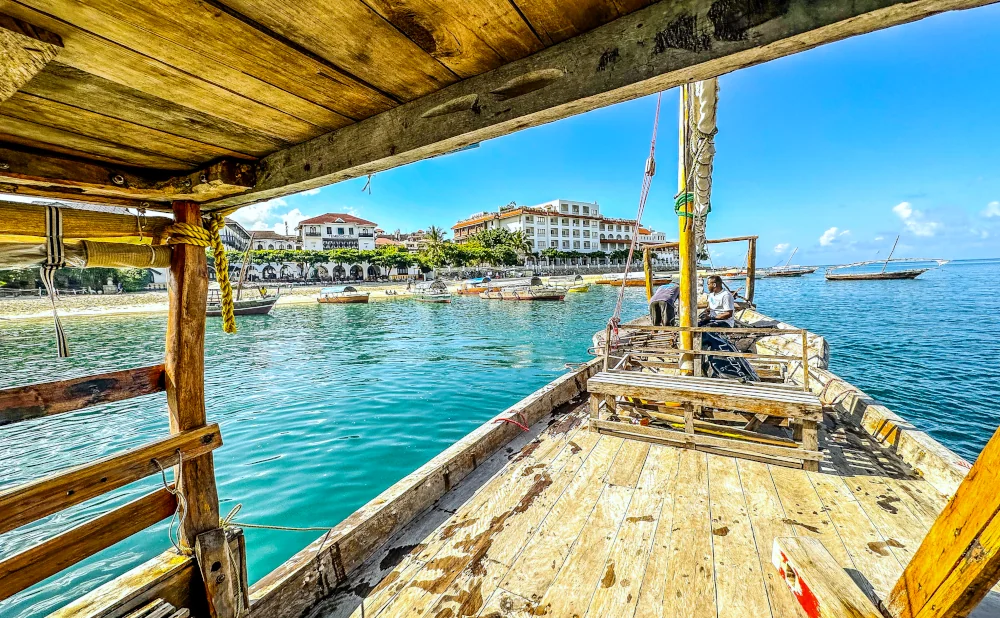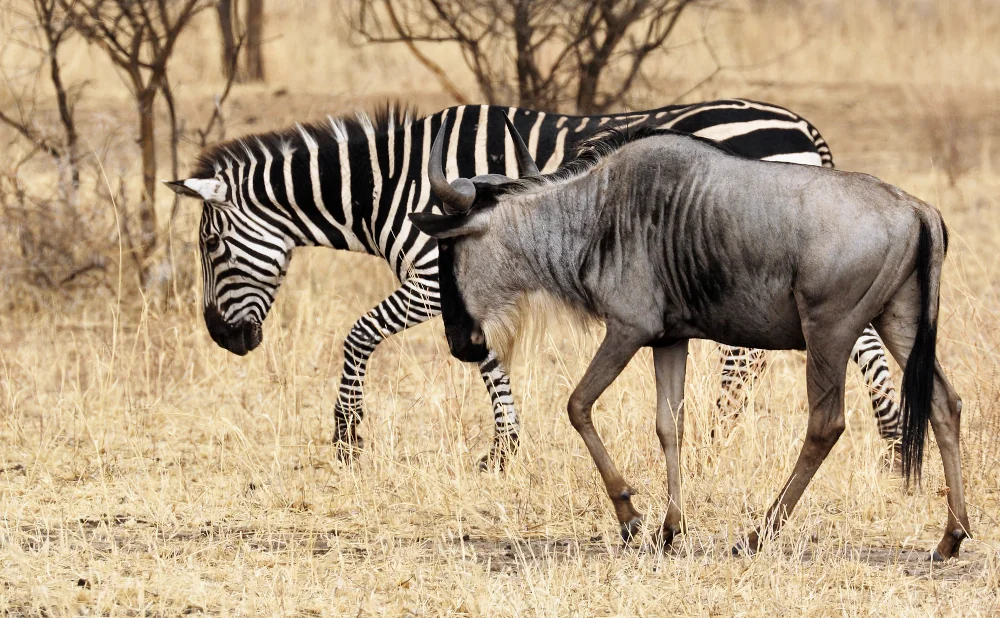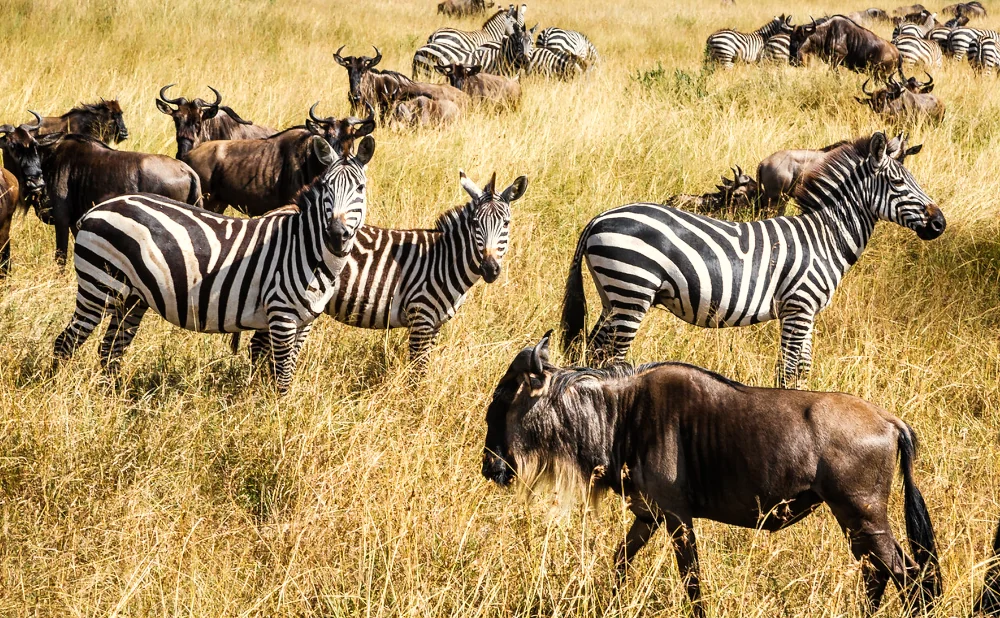Exploring the Diverse Tribes of Tanzania
Tanzania, a country in East Africa, is a vibrant tapestry of culture and tradition. It is home to approximately 120 distinct ethnic groups, each with its unique customs, languages, and ways of life.
The Maasai, Chaga, and Sukuma are among the most well-known tribes. Yet, there are many lesser-known tribes, such as the Hadzabe and Sandawe, that are equally fascinating. Each tribe contributes to the rich cultural mosaic that is Tanzania.
This article aims to take you on a journey through the diverse tribes of Tanzania. We will delve into their unique cultures, traditions, and the experiences one can expect when visiting. From the Maasai's cattle herding lifestyle to the Chaga's farming skills on Mount Kilimanjaro, there is much to explore and learn.
We will also highlight "golden trips" in Tanzania that offer cultural immersion. These trips provide an opportunity to experience the tribal cultures firsthand. They are a testament to the country's commitment to preserving and showcasing its cultural heritage.
Finally, we will discuss our company's role in promoting cultural tourism in Tanzania. We believe in providing authentic experiences that respect and honor the local cultures. Join us as we embark on this journey of discovery, exploring the diverse tribes of Tanzania.
The Rich Tapestry of Tanzanian Culture
Tanzania's cultural landscape is as diverse as its geography. From the snow-capped peaks of Mount Kilimanjaro to the sun-soaked beaches of Zanzibar, the country is a melting pot of cultures. Each tribe has its unique traditions, languages, and social structures, contributing to the rich tapestry of Tanzanian culture.
The tribes of Tanzania have a deep connection with the land they inhabit. Their lifestyles and traditions are often shaped by the natural environment. For instance, the Maasai's pastoral lifestyle is a reflection of the arid savannahs they call home, while the Chaga's farming skills have been honed by the fertile slopes of Mount Kilimanjaro.
Despite the modern influences and pressures, many tribes have managed to preserve their traditional ways of life. They continue to pass down their cultural knowledge and traditions from generation to generation. This cultural preservation is a testament to the resilience and adaptability of the Tanzanian tribes.
The Maasai: A Symbol of Tanzanian Heritage
The Maasai tribe is one of the most well-known tribes of Tanzania. Their vibrant red attire, intricate beadwork, and iconic jumping dance, known as "Adumu," have made them a symbol of Tanzanian heritage. The Maasai's semi-nomadic lifestyle, revolving around cattle herding, is a testament to their deep connection with the land.
Maasai Culture and Traditions
The Maasai's culture is rich and multifaceted. Their traditional attire, the Shuka cloth, is a cultural symbol known worldwide. The Maasai's diet traditionally consists of meat, milk, and blood from cattle, reflecting their pastoral lifestyle. Their beadwork is not only beautiful but also carries cultural significance, often telling stories or symbolizing social status.
The Maasai's traditional homestead, the "Manyatta," is a popular tourist attraction. These circular enclosures, made from mud, sticks, grass, cow dung, and cow's urine, house families and their livestock. The Maasai's warrior class, the "Moran," plays a key role in their society, protecting the tribe and its cattle.
Maasai and the Modern World
Despite the pressures of modernization, the Maasai have managed to maintain their traditional lifestyle. Their engagement with tourism has led to cultural preservation efforts and provided a source of income. However, the Maasai's land rights issues are a subject of ongoing debate, as their traditional grazing lands are increasingly encroached upon by modern development.
The Maasai's traditional knowledge, particularly in the field of ethnobotany, is a valuable resource. Their cultural rites of passage, oral traditions, and community decision-making through the "Laigwanan" or elder council, continue to be integral to their identity.
The Chaga: Farmers of Kilimanjaro
The Chaga tribe, residing on the slopes of Mount Kilimanjaro, is known for their farming skills. They have mastered the art of terraced agriculture, growing crops like bananas and coffee in the fertile volcanic soil. The Chaga's agricultural practices have shaped the landscape, creating a patchwork of green terraces on the mountain slopes.
Their history is steeped in the production of high-quality coffee, which has become a significant part of their economy. The Chaga's "Mbege," a traditional banana beer, is a cultural staple, often shared during social gatherings and celebrations.
Chaga Traditions and Economy
The Chaga tribe has a rich cultural heritage. Their traditional houses, known as "Chagga huts," are unique, with thatched roofs designed to withstand heavy rainfall. Inside these huts, the Chaga's traditional way of life unfolds, with spaces designated for cooking, sleeping, and livestock.
The Chaga's economy is largely based on agriculture. Their coffee production, in particular, has gained them recognition, contributing significantly to Tanzania's coffee exports. The Chaga's farming skills and economic success have made them one of the wealthiest tribes in Tanzania.
The Sukuma: Tanzania's Largest Tribe
The Sukuma tribe is the largest ethnic group in Tanzania. They primarily inhabit the northwestern part of the country, in regions known for their fertile soils. The Sukuma's name translates to "people of the north," reflecting their geographical location.
Agriculture is the mainstay of the Sukuma tribe. They are skilled farmers, growing crops like cotton, corn, and tobacco. Their farming practices have significantly contributed to Tanzania's agricultural output.
The Sukuma tribe is also known for their music and dance. Their traditional dance, called "Bisukuma," is a vibrant display of their cultural heritage, often performed during celebrations and ceremonies.
Sukuma Cultural Practices
The Sukuma tribe has a rich cultural heritage. Their traditional music and dance play a significant role in their society. Instruments like the "ngoma" drum and the "zeze" stringed instrument are commonly used in their musical performances.
The Sukuma also have a strong tradition of storytelling. These stories, passed down through generations, are a vital part of their cultural identity. They often contain moral lessons, teaching younger generations about their tribe's values and traditions.
The Hadzabe: Last of the Hunter-Gatherers
The Hadzabe tribe is one of the last hunter-gatherer societies in Africa. They reside in the remote regions of northern Tanzania, near Lake Eyasi. Their lifestyle has remained largely unchanged for thousands of years.
The Hadzabe's survival skills are impressive. They hunt game using bows and arrows, and gather fruits, tubers, and honey from the wild. Their deep knowledge of the land and its resources is a testament to their enduring way of life.
The Hadzabe tribe is small, with a population of around 1,000. Despite their size, they have managed to retain their unique culture and lifestyle in the face of modern pressures.
Preserving Hadzabe Traditions
The Hadzabe's traditional lifestyle is under threat. Encroachment on their lands and the impact of tourism are some of the challenges they face. Efforts are being made to preserve their unique culture and way of life.
Organizations and initiatives are working to protect the Hadzabe's lands and rights. They aim to ensure that the tribe can continue their hunter-gatherer lifestyle, preserving a vital part of Tanzania's cultural heritage.
The Swahili Coast: A Melting Pot of Influences
The Swahili Coast, stretching along Tanzania's eastern edge, is a vibrant blend of cultures. It's a place where African, Arab, and Persian influences have intermingled over centuries. This fusion has given birth to a unique culture and language, known as Swahili.
The Swahili people are known for their intricate woodwork and carving skills. Their architecture, a mix of African, Arab, and Indian influences, is a testament to their rich cultural heritage. The Swahili coast is a UNESCO World Heritage site due to its historical significance.
Swahili Language and Culture
The Swahili language, or Kiswahili, is a lingua franca in Tanzania. Born out of cultural interactions, it unites various tribes in the country. It's a symbol of the country's diverse yet interconnected tribal cultures.
Swahili cuisine is another reflection of this cultural fusion. The spice trade history has left a lasting impact on their cuisine, making it a delightful blend of diverse cultural influences.
Lesser-Known Tribes with Unique Lifestyles
Tanzania's tribal tapestry extends beyond the well-known tribes. There are numerous lesser-known tribes, each with unique lifestyles and traditions. These tribes, though smaller in number, contribute significantly to the cultural richness of Tanzania.
The Datoga and Sandawe tribes are two such examples. Both tribes have unique cultural practices that set them apart. Their lifestyles offer a glimpse into the diverse ways of life that exist within Tanzania's borders.
The Datoga: Master Blacksmiths
The Datoga tribe is renowned for their blacksmithing skills. They are skilled craftsmen, creating tools and ornaments with remarkable precision. Their work is not just functional, but also carries aesthetic value.
Their blacksmithing tradition is deeply rooted in their culture. It's a skill passed down through generations, preserving their unique cultural identity.
The Sandawe: Speakers of a Click Language
The Sandawe tribe is another fascinating group. They are known for their unique language, which includes click sounds. This language is similar to that of the Khoisan in Southern Africa.
The Sandawe's click language is a testament to the diversity of linguistic traditions in Tanzania. It's a unique cultural feature that adds to the rich tapestry of Tanzanian tribes.
The Role of Tribes in Tanzanian Tourism
Tanzania's tribes play a significant role in the country's tourism. They offer a unique cultural experience that attracts visitors from around the world. The tribal cultures, with their rich traditions and lifestyles, provide a unique perspective on Tanzania.
Golden Trips: Experiencing Tanzania's Tribal Cultures
Golden trips in Tanzania offer a chance to experience these tribal cultures firsthand. These trips provide an immersive experience, allowing visitors to engage with the tribes and their traditions. It's a unique opportunity to learn about Tanzania's cultural diversity.
Our Company's Role in Cultural Tourism
Our company is committed to promoting cultural tourism in Tanzania. We offer curated trips that provide a deep dive into the tribal cultures of Tanzania. Our goal is to provide an authentic and respectful experience, promoting understanding and appreciation of Tanzania's rich tribal heritage.
The Future of Tanzania's Tribal Heritage
Tanzania's tribal heritage is a living testament to the country's rich cultural diversity. As we move into the future, it's crucial to preserve these unique cultures and traditions. They are not only a source of national pride but also contribute significantly to Tanzania's cultural tourism.
Efforts are underway to ensure the survival of these tribal cultures. From cultural preservation initiatives to sustainable tourism practices, Tanzania is striving to protect its tribal heritage. As we continue to explore the diverse tribes of Tanzania, we are reminded of the richness and depth of human culture and history.











